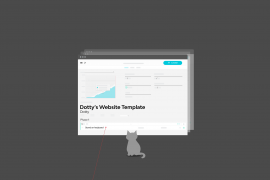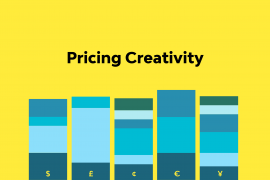Many ’employed’ designers dream of one day starting their own studio. It can be a little isolating when the dream turns into a reality … we’ve found one new business owner willing to share their experience.
Clare Balmer started her own business, Container Creative after a brief stint of working in one of Melbourne’s leading design studios.
5 hardest things to conquer in your first year of business
- Self Doubt. It’s one thing to learn the techniques, but self development in design can take many years.
(Read an earlier article: The 3 stages of learning) - Planning your procedures. Time-lines for production can be a lot to get your head around. How long should a web developer take to build a site you designed? You don’t know when to start demanding delivery if you haven’t been through the process before.
- Communication and personalities. You might have a great relationship with your client, but their business partner may be a whole different story. Learning to communicate and keep everyone on the same page is vital.
- Starting/planning the documentation of your business procedures. Invoicing, time-sheets, project management, accounting, filing, archiving, legal requirements.’
- Finding the right people and clients to align yourself with. Having the right printer, web developer, copywriter, and other specialists to align yourself with in business can win or lose you clients. When you are just starting out this can be a trial and error process for a long time.
I think the take-away point here is to watch and listen carefully while you are safely employed.
Specifically:
take notice of how a business is run
actively build a network of other designers and good, reliable suppliers.
The learning ‘how to communicate with others’ and ‘overcoming self-doubt’ is part experience and part living skills.
The 3 stages of learning
Years ago we attended one of the How Magazine’s Mind Your Own Business design management seminars in New Orleans. It was an interesting experience in all sorts of ways but one of the most valuable sessions I attended was by a designer in her 30’s that had come to the realisation that to market her studio well, she had to really understand herself.
So she went on a self-knowledge crusade.
It was a little new-age American for me, but the result is worth repeating.
And the knowledge, believe it or not came from her supreme yoga guru.
The gist of her message what that there are three stages of learning.
The first stage (as a graduate) is confident incompetence.
We’re straight out of university and we think we know it all. We (and I use that term inclusively because it was certainly me) are supremely confident in everything we do. Unfortunately we’re not too good at a lot of it – hence the incompetence.As we mature – and generally that happens in our early 30s – we realise that we don’t know as much as we thought we did – unconfident competence. Truth be told we are actually quite good at our job but all we see are the bits that we aren’t good at. Many people get disillusioned at this time and change careers thinking that they are never going to excel at their first choice of career, so best they choose another. For some people this stage can repeat over and over as they continually change careers.
The third stage of learning is confident competence. We understand that we don’t know everything but that’s OK. There’s a confidence in our skill level and a maturity to feel comfortable to ask if we don’t know the answer.
We market our studio – and our brand – on our experience and how that is of value to clients. I’m no longer intimidated to hold up my hand and ask for a brief to be explained again, in a different way.
I’m happy to act as the lowest common denominator for some clients – if they can get me to understand a difficult financial concept, I can design information in a way that can be communicated quickly and efficiently.
So the moral from the story is by really understanding where you are in your career, and where your staff are in theirs, you can run, and market your studio better.
Article republished with permission from dmzine illustration for Streamtime by Janine Wareham








